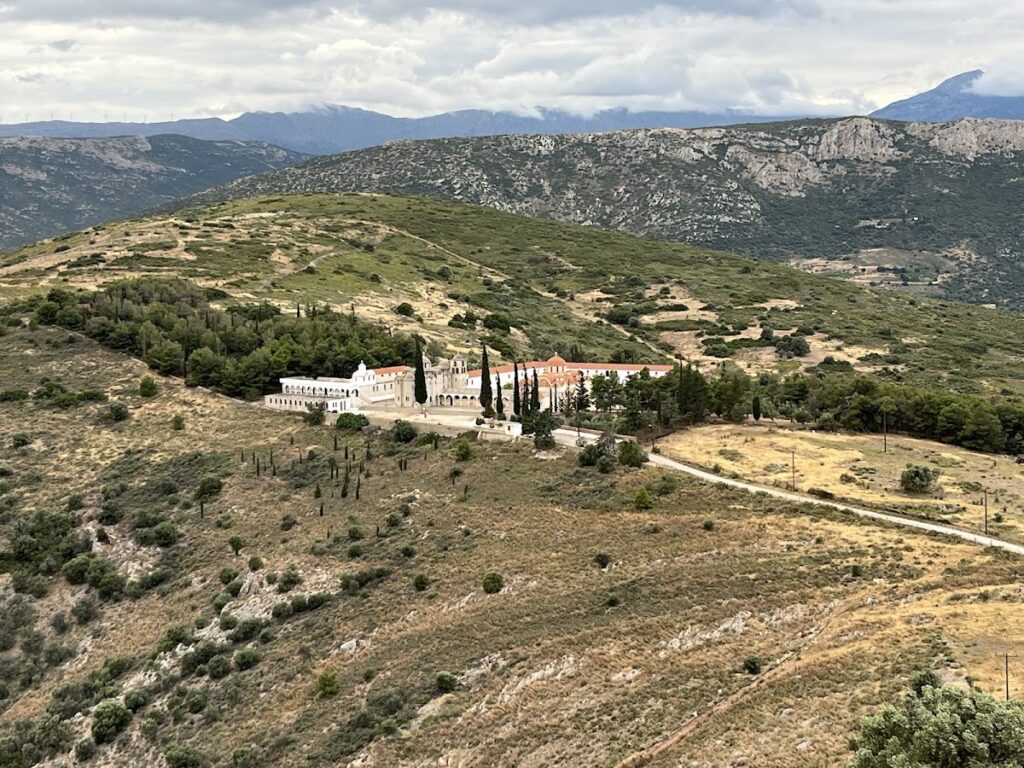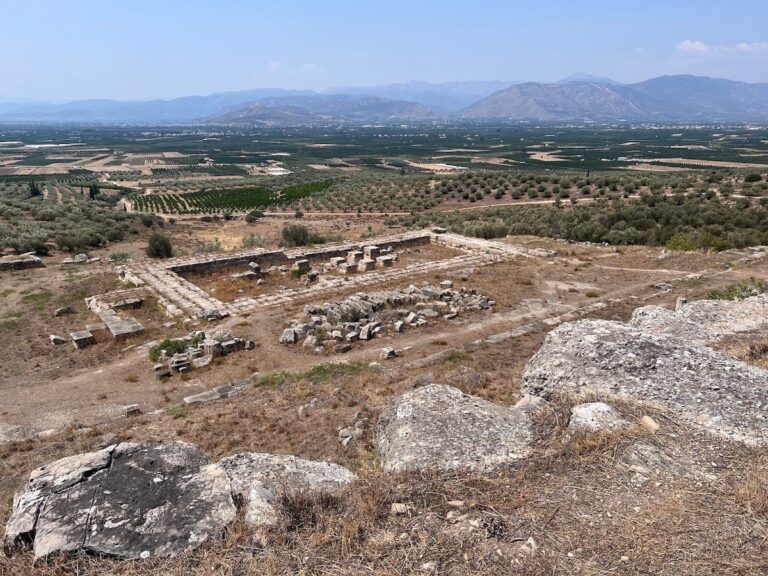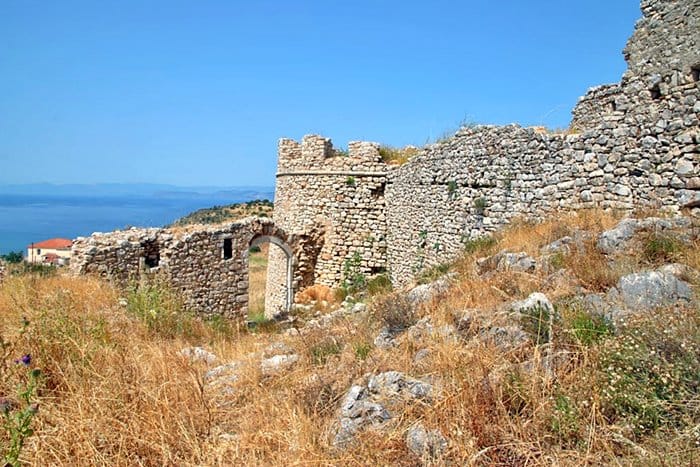Larissa Fortress: Historic Acropolis and Castle in Argos, Greece
Visitor Information
Google Rating: 4.5
Popularity: Medium
Google Maps: View on Google Maps
Official Website: www.kastra.eu
Country: Greece
Civilization: Unclassified
Remains: Military
History
Larissa Fortress, also known as Castle Larisa, crowns a high rocky hill within the municipality of Argos in modern Greece. Its origins trace back to ancient times, with the site serving as the acropolis of Argos. The name Larisa itself is linked to a group of Pelasgians, an ancient people who, according to the geographer Strabo, were later expelled to Italy and established a new settlement there, also named Larisa, in honor of this original fortress.
During the Mycenaean era, the main habitation and temple complex lay on Aspis hill to the north, while in the Late Bronze Age, Dorian settlers occupied the eastern slopes of Larisa and nearby plains, effectively creating the foundation for the Classical city of Argos. Around 421 BC, a significant fortification effort saw the construction of long walls designed to connect Argos with the port town of Nauplion. These walls were built by Athenian craftsmen but were destroyed during a Spartan assault led by King Agis II, demonstrating the turbulent conflicts of the period.
Before 272 BC, the city underwent re-fortification that unified Larisa and Aspis with defensive walls enclosing the classical city. This arrangement featured key gates positioned strategically: the Deiras Gate to the west, Nemean Gate to the north, Eileithuian and Kylabris Gates to the east, and a southern gate providing access toward Tegea. The fortress thus became an integrated defensive system crucial to Argos’ urban layout.
The 2nd century BC was marked by regional unrest linked to conflicts over Roman influence. Argos changed hands among factions supporting or opposing Rome. Notably, Nabis of Sparta occupied the city, only to be besieged by the Roman commander Titus Quinctius Flamininus. Following this siege, Flamininus withdrew Roman forces in 194 BC after placing the city under the protection of the Achaean League, illustrating Argos’ strategic importance amid shifting regional power dynamics.
In the later Roman and early medieval periods, Larisa saw further upheavals. The Ostrogoths under Alaric I seized the fortress in 395 AD, an event that led to many locals being sold into slavery. Later, Slavic groups overran the site around 600 AD, reflecting broader migrations and power shifts in the region.
By the 12th century, the Byzantines erected a new castle atop Larisa hill, reaffirming the site’s military significance. The fortress changed hands during the Crusader period; in 1212 it was captured by Geoffrey of Villehardouin, later transferred to Otto de la Roche, Duke of Athens, becoming a key stronghold within the Lordship of Argos and Nauplia. The castle underwent repairs in the 14th century under bailiffs Walter and Francis Foucherolles, who maintained its defenses against threats such as the Catalan Company.
The late 14th century brought further political changes. In 1388, the cities of Argos and Nauplia were sold to Venice but soon were taken by Despot Theodore I Palaiologos and Nerio I Acciaioli with Ottoman assistance. Theodore retained control until 1394, after which Venice reclaimed Argos. The fortress suffered a sack by Ottoman troops following their 1395 victory at Nicopolis but remained Venetian until the Ottomans captured it during the First Ottoman–Venetian War in 1463.
During the Greek War of Independence commencing in 1821, Larissa Fortress was seized by Demetrios Ypsilantis. Although the fortress saw limited further military use, the surrounding slopes hosted religious establishments in later centuries: a nunnery in the 18th century and a male monastery in the 19th century. The male monastery briefly operated as a national mint during the War of Independence before such activities moved to Aegina. Overall, the site maintained a presence in military and religious life in the region for nearly two millennia.
Remains
Larissa Fortress occupies the summit of Larisa hill, rising approximately 289 meters above sea level, and features a well-defined citadel at its peak. The fortress walls form a perimeter fortified by towers exhibiting diverse shapes including square, round, triangular, and octagonal forms, reflecting the layered construction history spanning ancient Hellenistic times through Byzantine, Frankish, Venetian, and Ottoman periods. This blend of masonry styles illustrates continuous adaptation of the fortifications to evolving defensive needs.
In the 15th century, the fortress was strengthened to endure artillery assaults, with the addition of cylindrical bastions that incorporated water cisterns for sustained defense. A partition wall divided the southern area of the castle’s outer enclosure, marking a deliberate spatial organization within the fortifications. At this time, existing gates originally built during Byzantine occupancy were blocked, replaced by newly constructed entrances positioned further west along the walls to enhance security.
During the early 18th century, a central cylindrical tower located on the southwestern corner of the citadel was destroyed in a gunpowder explosion. This tower was subsequently replaced by a bastion, which remains visible today, symbolizing the fortress’ continued evolution into the gunpowder era. In the 16th century, an additional wall was erected south of the citadel gate, creating an inner courtyard. This wall features a passage with double gates on its eastern side, facilitating controlled access within the castle’s defensive layout.
Below the castle, approximately midway down the hill’s slope, the Panagia Katakekrymeni-Portokalousa monastery stands as a prominent religious monument linked geographically and historically with the fortress. Opposite the castle entrance lies the Monastery of Agia Marina, a nunnery established on the site in the 18th century. Within the northern section of the inner fortifications, a small Byzantine church endures, preserving a place of worship amidst the military architecture.
Archaeological excavations initiated in the early 20th century have primarily concentrated on the castle’s interior structures. Efforts led by the 25th Ephorate of Byzantine Antiquities have included reinforcing the foundations and restoring outer fortifications and gates, helping maintain the integrity of the fortress. The castle’s formidable silhouette is visible from nearly every vantage point in Argos and features remains such as Hellenistic-era walls, Frankish fortifications, and polygonal Venetian bastions nestled behind Ottoman-style round bastions, providing a tangible record of its layered past.










